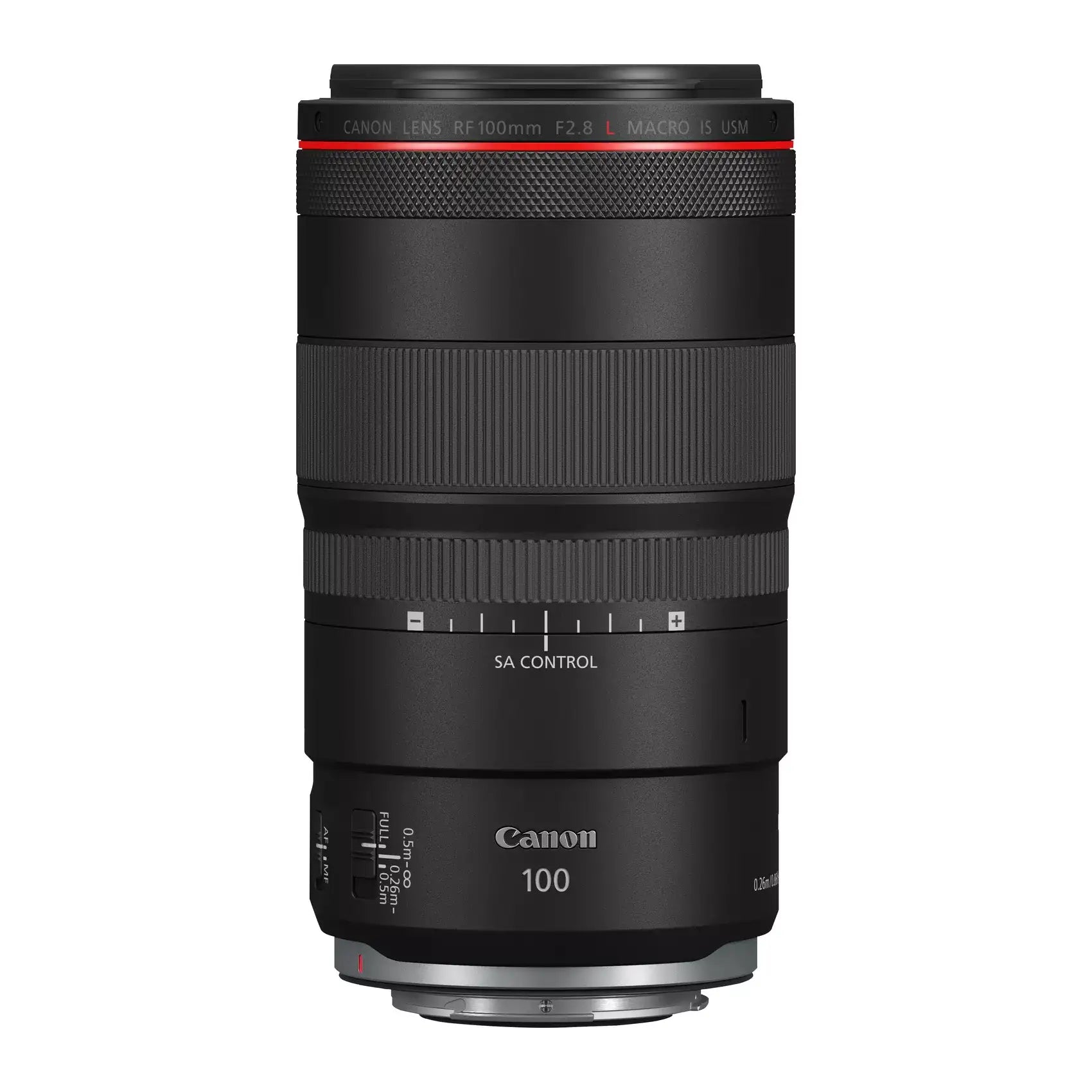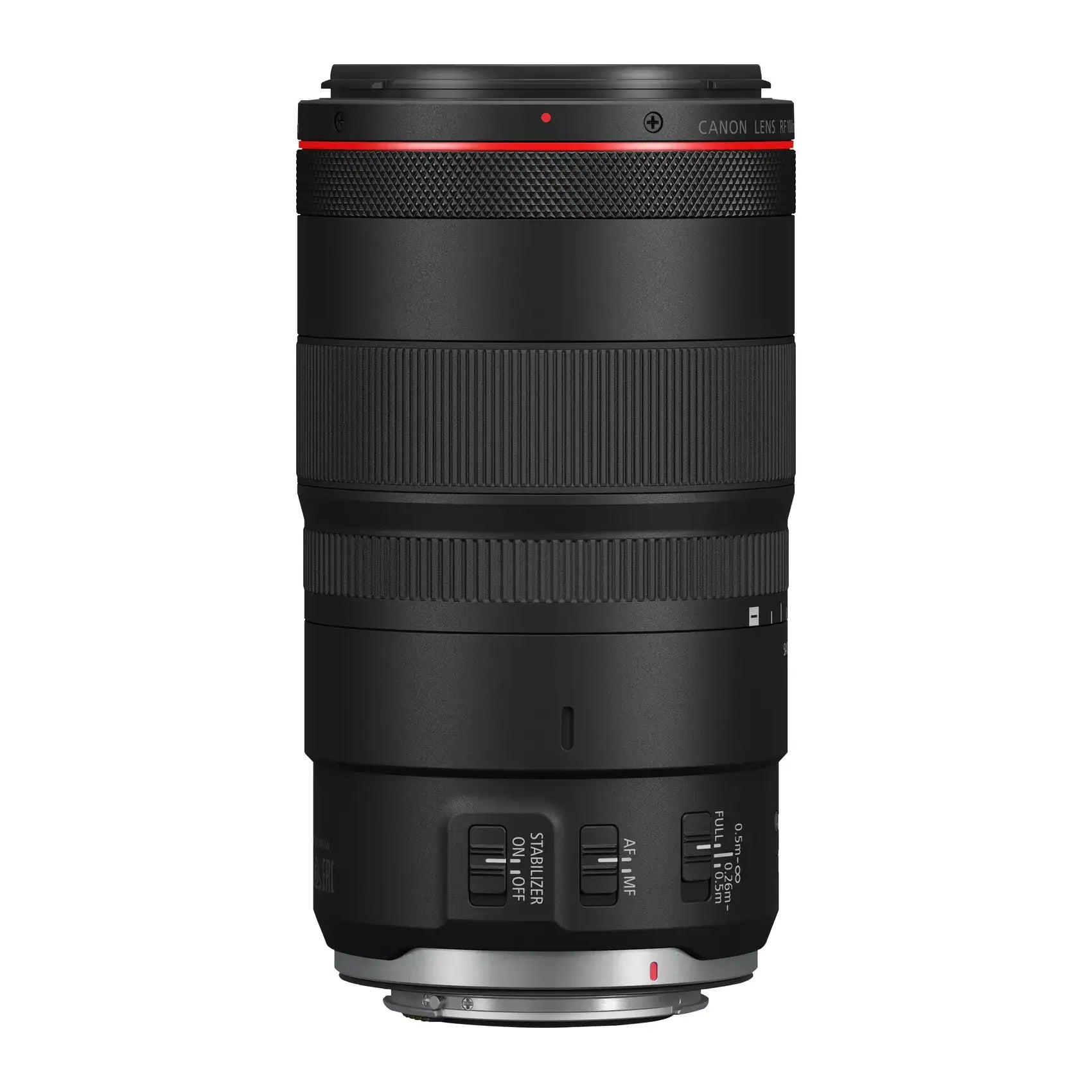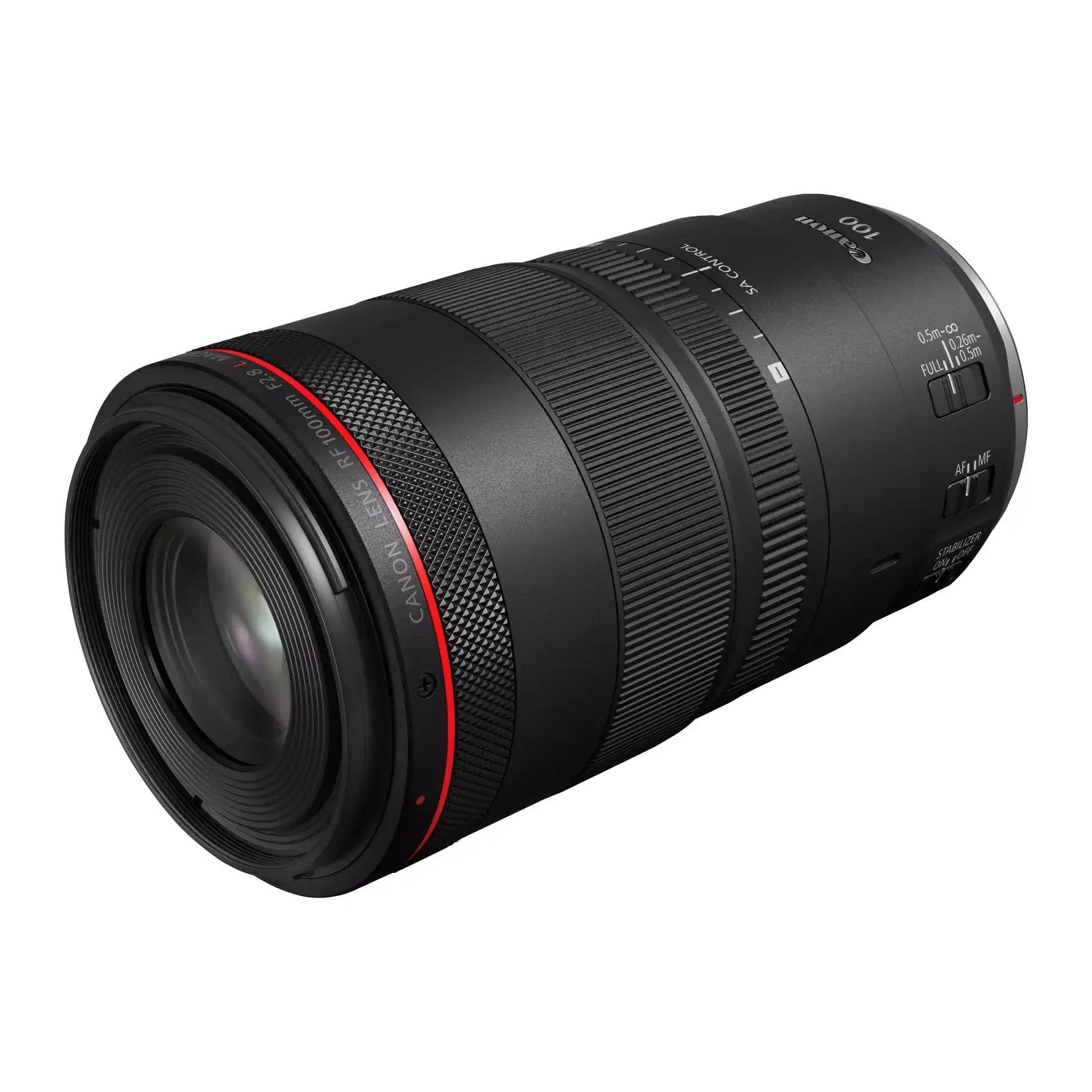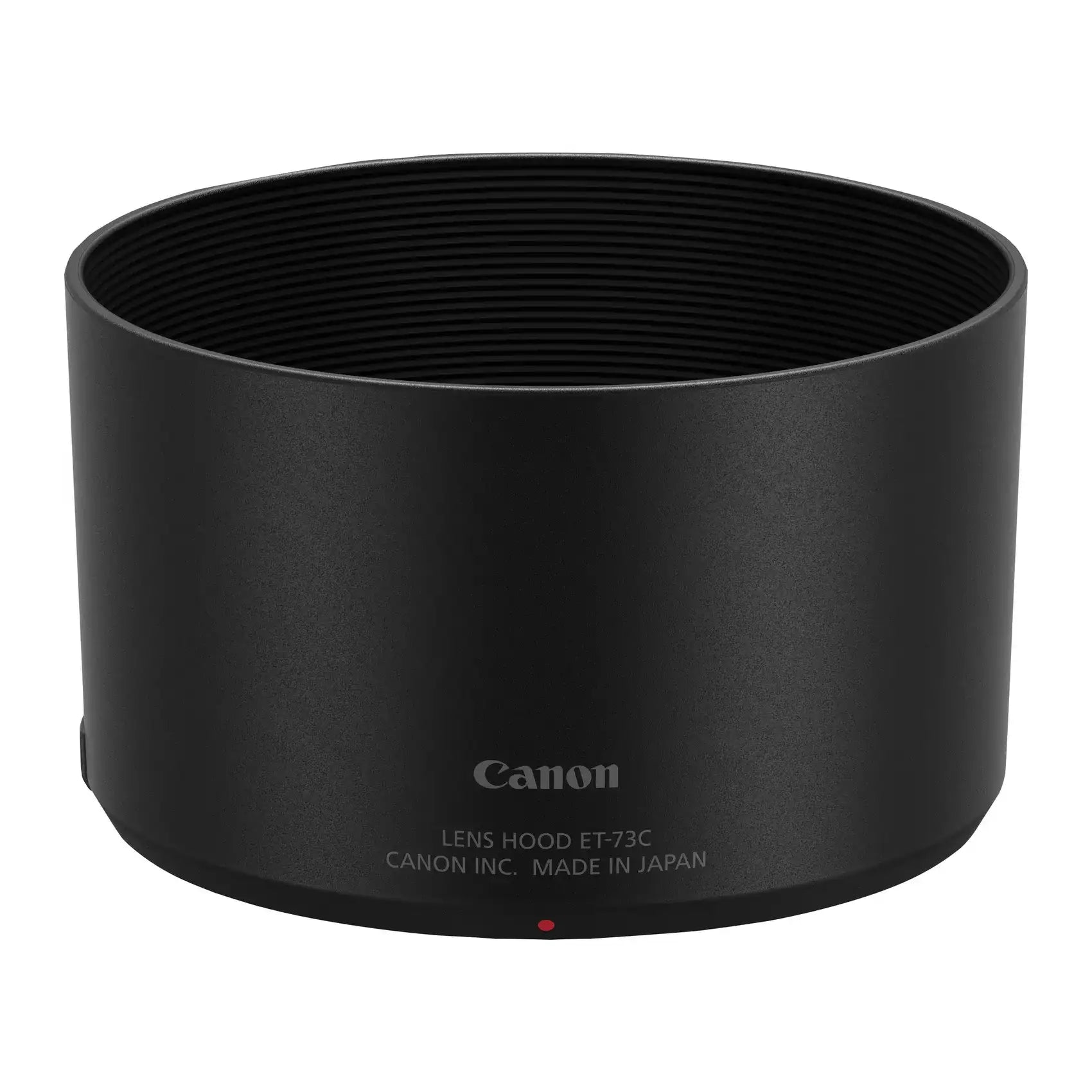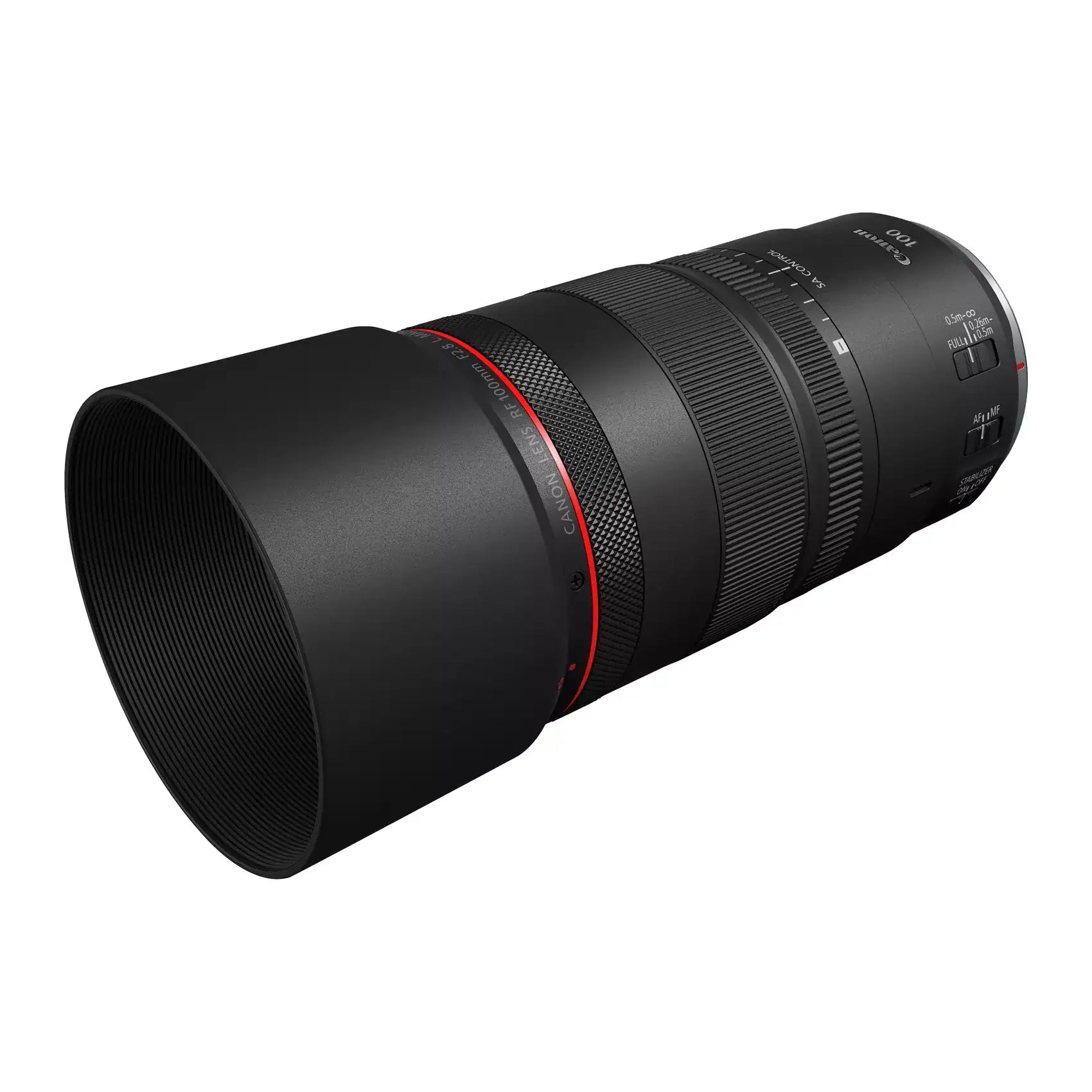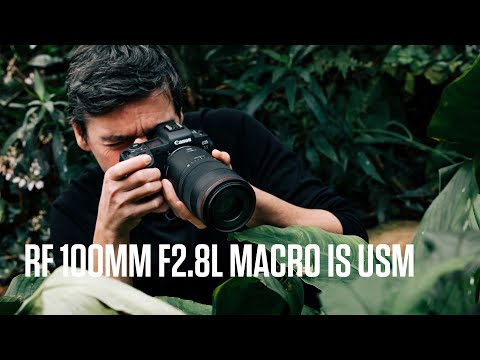Canon Winter Cashback Promotion 2025

Claim cashback on selected Canon cameras, lenses and binoculars – 17th October 2025 to 20th January 2026
Make this winter one to remember with Canon’s Winter Cashback promotion. Purchase selected Canon cameras, lenses or binoculars during the promotional period and claim cashback after your purchase.
It’s the perfect opportunity to upgrade your photography kit or invest in new creative tools – and get rewarded for it.
Find out more and claim your cashback on Canon’s official promotion page.
Product Description
Introducing the Canon RF 100mm f/2.8L Macro IS USM Lens, a groundbreaking macro lens that delivers extraordinary detail and versatility for both close-up and portrait photography. As the world’s first AF macro lens offering an incredible 1.4x close-up magnification, this lens takes you closer than ever before to capture stunning, high-definition images. Whether you're exploring the intricate beauty of macro photography or capturing elegant portraits, this lens is designed to elevate your photography.

Why the Canon RF 100mm f/2.8L Macro IS USM is a Must-Have Lens
-
Unparalleled Macro Magnification
- Get closer than ever with the 1.4x magnification—the highest in its class. Reveal details other macro lenses simply can't reach, making this lens perfect for nature, product, and macro enthusiasts. From fine textures on a flower petal to tiny insects, every detail is captured in breathtaking clarity.
-
Exquisite Bokeh with Spherical Aberration Control
- Take control of your creative vision with the Spherical Aberration (SA) Control ring. This innovative feature allows you to adjust the look of the bokeh (blurred background) and even create a soft-focus effect, making it an ideal portrait lens. Whether you want a dreamy, soft-focus look or a more controlled blur, the SA Control ring gives you full control over your artistic expression.
-
Fast f/2.8 Aperture for Low-Light Performance
- The bright f/2.8 maximum aperture enables stunning performance in low-light conditions, giving you the flexibility to shoot in challenging lighting while maintaining excellent image quality. Combined with a 9-blade diaphragm, this lens produces beautifully soft background blur, enhancing your subject with gorgeous bokeh.
-
Hybrid Image Stabilization for Steady Shots
- Canon’s Hybrid Image Stabilizer compensates for up to 5 stops of shake, ensuring sharp and steady images even when shooting handheld. When paired with Canon cameras featuring In-Body Image Stabilization (IBIS), the lens can achieve up to 8 stops of stabilization. This is especially beneficial for macro photography, where even the slightest vibration is magnified.
-
Dual Nano USM Motors for Smooth, Silent Autofocus
- The Dual Nano USM motors provide rapid, precise, and near-silent autofocus, making this lens perfect for both stills and video. The system drives both the conventional focus group and a floating focus group independently, ensuring high-speed focusing, smooth operation, and suppressed focus breathing for consistent results during video recording.
-
L-Series Durability and Weather-Sealing
- Built to Canon's L-series standards, this lens is designed to withstand challenging conditions. The weather-sealed construction protects against dust and moisture, while a fluorine coating on the front element resists smudges and makes cleaning easier. You can confidently take this lens into the field, rain or shine.
-
Perfect for Portraits and Close-Ups
- The versatile 100mm focal length is ideal for both macro and portrait photography, delivering flattering results with beautiful background separation. The lens’s ability to shift from infinity to close-up focusing with precision means you can shoot a range of subjects, from detailed macros to stunning portraits, all with one lens.
-
Innovative SA Control for Bokeh Customization
- The Spherical Aberration Control ring offers an additional level of creative control. Adjust the appearance of out-of-focus areas both in front of and behind your subject, while also achieving a soft-focus effect on your subject itself. This feature is perfect for creating unique, artistic looks for both macro shots and portraits.
-
Lens Control Ring for Seamless Adjustments
- The Customizable Control Ring allows for quick, on-the-fly adjustments of critical settings such as aperture, ISO, and exposure compensation, ensuring you never miss the moment. Stay in the flow of your shoot while maintaining full control over your settings.


Key Features:
- 1.4x Magnification: Unrivaled close-up capabilities for breathtaking macro shots
- Spherical Aberration Control: Fine-tune bokeh and create a unique soft-focus effect
- f/2.8 Aperture: Ideal for low-light conditions and creating beautiful bokeh
- Dual Nano USM Motors: Fast, quiet, and accurate autofocus for both stills and video
- 5-Stop Hybrid Image Stabilizer: Keep your shots sharp, even in low light or without a tripod
- L-Series Build Quality: Weather-sealed for durability in challenging conditions
- Customizable Control Ring: Adjust settings on the go without interrupting your shoot


Elevate your macro photography and portraits to the next level with the Canon RF 100mm f/2.8L Macro IS USM Lens. This lens offers photographers a perfect balance of cutting-edge features, durability, and creative control, making it an essential tool for anyone looking to capture the world in exquisite detail. Whether you’re shooting stunning close-ups or soft, dreamy portraits, this lens has the versatility and performance to deliver.
For full specifications click Here

Try The Kit - Canon Test Drive

Canon Test Drive – Try Before You Buy with Free Next Day Delivery
Test selected Canon gear with a 48-hour free trial or hire for up to 7 days at a low cost. Book anytime via the 24/7 live system.
How it works:
-
Book your kit – Choose dates and reserve online.
-
Pay a refundable deposit – Fully refunded upon safe return.
-
Fast delivery – Get your gear quickly and securely.
-
Easy returns – Use pre-paid packaging for simple drop-off or collection.
Visit https://testdrive.trythekit.com to book yours now.
Payment & Security
Your payment information is processed securely. We do not store credit card details nor have access to your credit card information.


